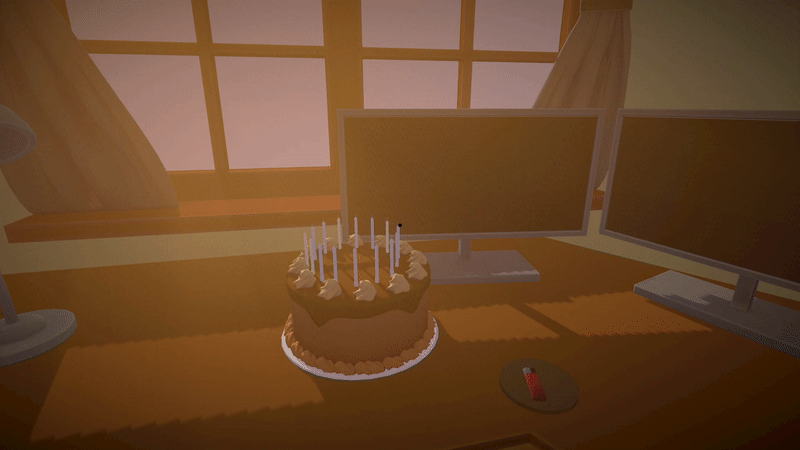Love You More is 3D first person narrative game in which you play as Connor, a single father, who visits a memory-restoration clinic in order to relive the days he had with his now-estranged son Bry. In the game, you control Connor as he gets to relive his cherished memories and routine joys, while being faced with the darker parts of how his actions shaped their distant relationship.
The project was made for the second semsester collaborative project module in the Cologne Game Lab.
My Responsibilities
-
Designing the main system on which the narrative was built
-
Conceptualizing and crafting the story, characters and plot
-
Designing the content and gameplay of each interaction and how they connect with one another to create a well-paced narration
-
Implementing in-engine a lot of the small interactions and shaders, as well as assembling the working final scene
Narrative Design
The game’s narrative design is built around immersing the player in the feelings of nostalgia and longing, which are over time revealed as merely a veil repressing the traumatic reality of what truly happened.
Evoking Nostalgia
At the start of the game, I wanted to immerse the player in this cozy melancholic feeling of nostalgia for the time the main character spent with his son. The way I set out to do this was mainly threefold:
Have a cozy warm atmosphere and a lived-in home environment (courtesy of our terrific artists).
Unfold the memories through performing actions that are experientiatlly or culturally associated with nostalgia – childhood games, shaking polaroids, birthday decorating. This makes them relatable to the player even though they might not share the same experiences as the character.
Have the character remember things fragmentarily, as thoughts, leading to a more hazy and dreamlike presentation of his inner monologue.


Evoking Terror


At some point, as the player makes their way through these nostalgic interactive set-pieces, the character stumbles on to a thought that they do not want to remember, resulting in a glitch-like zap which deletes it from the simulation. These happenings quickly escalate, turning into whole alternate visions and destructive actions that spiral out from each memory, paired with a transgressive digital audio-visual presentation.
The main way I make this work is by using an asymmetry of perception between the player and character. While the player sees and goes through these experiences that hint at a hidden truth, the character’s thoughts never acknowledge them, always focusing on the happy sentimental parts of each memory.
Over the course of the story, this device develops the narrative tension by emphasizing the rift between the main character’s cognition and the distorted fragments of reality seeping through the cracks.
Reveal Shader

A feature I’m particularly proud of is this reveal shader we created with our programmer. It allowed us to make 2 things happen:
Provide a nice visual feedback and reward for whenever the player completes a scene
Guide the player to the next scene
Create a sense of narrative progression as the player reveals more and more of the house the character lived in
